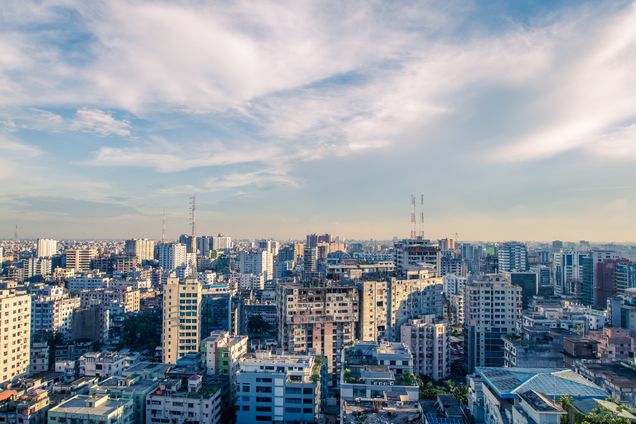Policy Space for Building Production Capabilities in the Pharmaceuticals Sector in Low- and Middle-Income Countries: Evidence from Bangladesh

Bangladesh is one of the few Least Developed Countries (LDCs) that has been able to gain a foothold in the global medicines market, which is characterized by significantly high entry barriers compared to other traded goods.
Policies implemented by the Bangladesh government have strengthened its pharmaceutical sector, but to what extent would Bangladesh have been able to deploy their policy mix if the country was not exempt from these trade rules? As graduation from LDC status looms over Bangladesh, a new journal article in the Journal for Globalization and Development from Mustafizur Rahman, Veronika Wirtz, Warren Kaplan, Rachel Thrasher and Kevin P. Gallagher assesses the current policies in place and the implications of international trade and investment rules on the sector’s future growth.
In 2019, Bangladesh’s pharmaceutical market revenue reached $2.8 billion, with the sector ranking fourth among the major industrial sectors of the nation. Bangladesh has been able to access the markets of fellow World Trade Organization (WTO) members while taking advantage of several rule exemptions and flexibilities of bilateral, regional trade and investment treaties. Exemptions from the Agreement on Trade-Related Aspects of Intellectual Property (TRIPS) and the Agreement on Trade-Related Investment Measures (TRIMS), which have strict rules on intellectual property protection and the ability to regulate foreign trade, have allowed Bangladesh’s pharmaceutical sector to flourish at a steadfast rate.
Additional policies deployed include suspension of pharmaceutical patents, shortened patent protection terms, rules allowing broad application of compulsory licensing and import restrictions, among others. However, as Bangladesh approaches its LDC graduation and prepares for coming into compliance with WTO rules, the application of trade rules will significantly affect the pharmaceutical sector’s continual growth.
Main findings:
- The expected application of various WTO rules and other trade treaties threaten Bangladesh’s current policies current health, industrial and investment policies.
- International trade and investment rules will conflict with the policies in place that incentivize the local pharmaceutical industry and will make it susceptible to major losses of its current policy space for protection, continual building of production capacity in the pharmaceutical sector and access to affordable medicines for Bangladesh’s population.
- In the wake of COVID-19 and daunting protection of health technology monopolies, low- and middle-income countries wanting to replicate Bangladesh’s policy efforts to strengthen their own medical manufacturing capacities will likely also face constraints from global, regional and bilateral trade and investment treaties.
In all, the researchers emphasize that the experience of Bangladesh will extend far beyond the reaches of the country itself to other emerging market and developing countries looking to replicate Bangladesh’s success. The authors also note that while beyond the scope of this paper, there is also the question of “whether it is still possible for governments to build a vibrant domestic healthcare industry in the face of the daunting protection of health technology monopolies.” The rest remains to be seen.
This journal article was previously published as a working paper in September 2021.
Read the Journal Article Read the Working Paper Read the Blog Summary